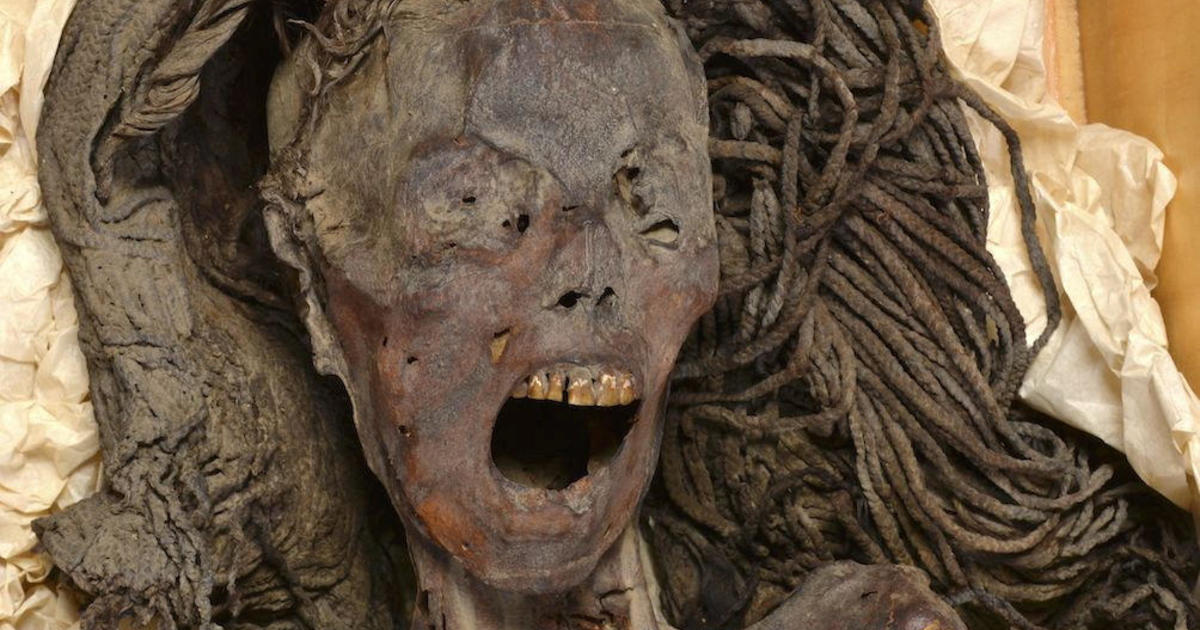The mummy of an ancient Egyptian woman with her mouth wide open in what looks like an anguished shriek may have died “died screaming from agony,” researchers say.
The unnamed woman mummy, discovered in a 1935 archeological expedition in Deir el-Bahari near Luxor, was kept in The Cairo Egyptian Museum and referred to as “Screaming Woman Mummy of the store of Kasr al Ainy.”
Sahar Saleem
In an article in the journal Frontiers in Medicine, scientists said they used CT scans and other testing to examine whether the mummy had any pathological abnormalities and assess potential causes of death,
They found that the woman, who was around 48 years old at the time she died, had lost some teeth and lived with mild arthritis of the spine. Her body was embalmed about 3,500 years ago with high quality ingredients.
Ancient Egyptians mummified bodies because they believed preserving them after death secured a worthy existence in the afterlife. Usually, internal organs would be removed during the mummification process, but that did not take place with the “Screaming Woman.”
“In ancient Egypt, the embalmers took care of the dead body so it would look beautiful for the afterlife. That’s why they were keen to close the mouth of the dead by tying the jaw to the head to prevent the normal postmortem jaw drop,” lead researcher in the study, Cairo University radiology professor Sahar Saleem, told the Reuters news agency.
But this had not happened in the case of the “Screaming Woman.”
“This opened the way to other explanations of the widely opened mouth – that the woman died screaming from agony or pain and that the muscles of the face contracted to preserve this appearance at the time of death due to cadaveric spasm,” Saleem told Reuters, adding that, due to all of the unknowns around her history, the cause of her expression can’t be established with certainty.
Saleem told Reuters that cadaveric spasm is a poorly understood condition, where contracted muscles become rigid immediately after death.


